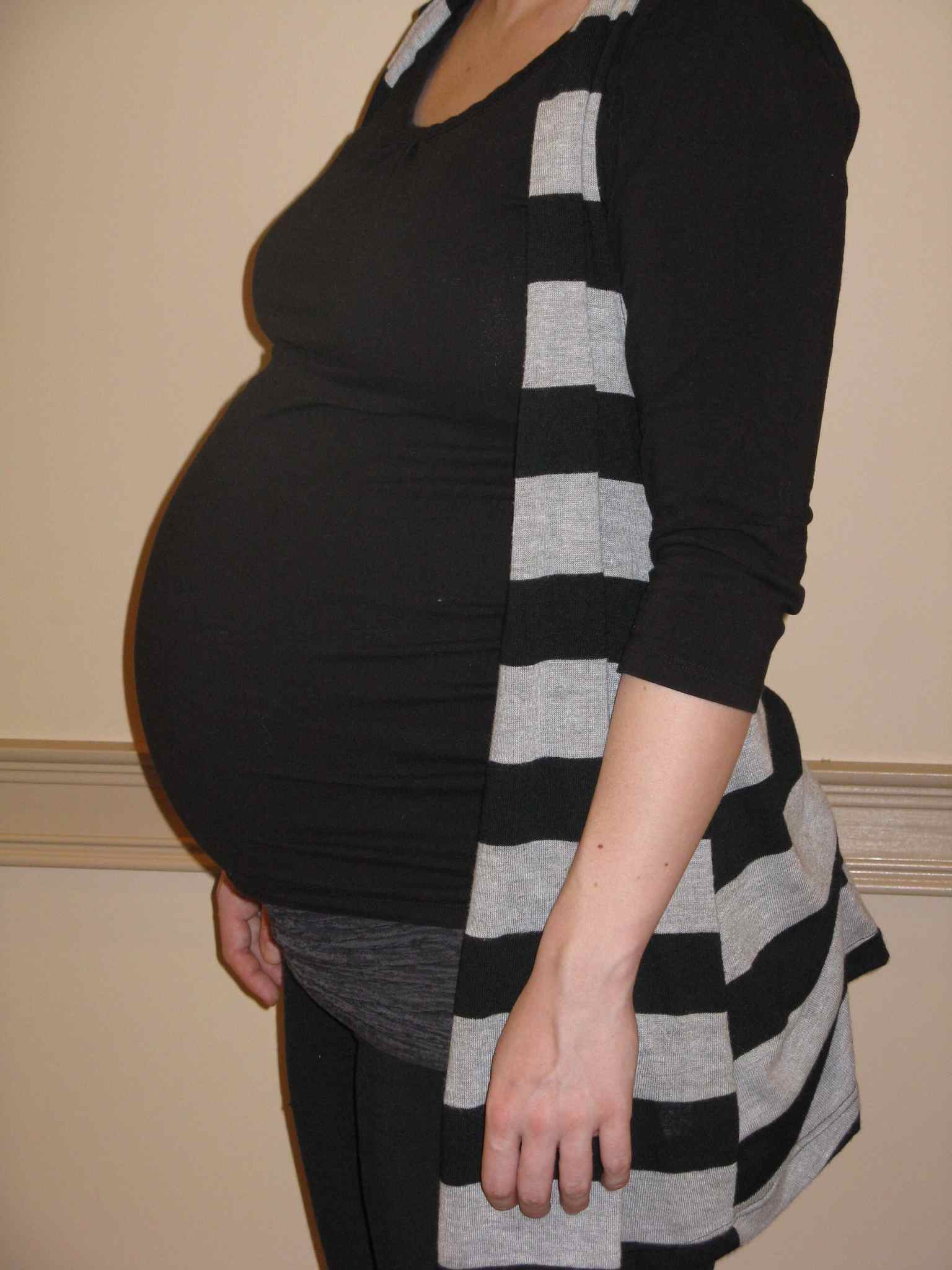Rapid weight gain, asymmetric weight distribution, hormones intent on loosening all of your body’s ligaments – with all of these processes working against you during your pregnancy, it is not surprising that you might experience some amount of back pain.
While back pain is common during pregnancy, it should not be considered to be normal!
By the end of the third trimester, most women gain between 25 and 35 pounds. The majority of this weight is typically carried towards the front of the body, in the tummy region. To compensate for this asymmetric weight distribution, women shift their center of gravity to the posterior by leaning backwards. The act of leaning backwards creates sway-back posture.
Anatomically, sway-back posture stretches (and weakens) your abdominal muscles, tightens your lower back muscles, stretches the ligaments of your spine, and forces the facet joints of your lower spine together. The more weight one gains during her pregnancy, the more stress these structures endure. The end result is a weakened core, imbalanced torso musculature, reduced mobility of the spinal column, and pain due to over-taxing of the lower spine and sacro-iliac joints.
The most common cause of lower back pain during pregnancy is a dysfunctional Sacroiliac Joint!

During the last couple of months of one’s pregnancy, her body releases a hormone called relaxin. The purpose of relaxin is to loosen the ligaments and joints of the pelvis to prepare for the baby to pass through the birth canal. While this makes the process of delivery possible, it further contributes to the weakening of your core strength by encouraging instability of the pelvic joints. This is the reason why a pregnant woman “waddles.”
There are a variety of different things that you can do to maintain a healthy back during your pregnancy. The following is a list of those items:
Don’t overdo it & don’t be afraid to ask for help if you need it
Good posture – to balance core musculature and encourage the vertebrate, discs and core musculature to help support and carry your weight ergonomically
Good footwear – low heeled shoes with good arch supports
Lift properly – use your legs, not your back
Pelvic floor & Pelvic tilting exercises – strengthen your core and essentials
Exercise – walk or swim
Lumbar support pillow – sleep on your side with a pillow between your knees and a support pillow wedged under your tummy
Maternity belt – a fitted belt to help distribute the weight of the baby throughout your torso
Warm/cold packs & Massage - to help your overworked and overstressed muscles recuperate
Prenatal yoga - to maintain mobility, flexibility, and strengthen core musculature
Chiropractic
Persistent pelvic dysfunction can lead to pubic symphysis pain. It also can lead to chronic abnormal posture which can result in Sciatica. Sciatica is a medical term used to describe a sensation of lower back pain that radiates down the buttock, along the back of the leg, and extends below the knee. It seems that the longer one endures back pain during the process of being pregnant, the more likely they are to experience back pain after their pregnancy (post-partum), and the longer back pain is present, the more difficult it is to treat!
Chiropractic treatment has proven to be very successful in the treatment of pubic symphysis dysfunction, sciatica, and pregnancy related back pain. In fact, a study published by Daly et al in 1991 found that 91% of women had “relief of pain and no longer exhibited signs of sacroiliac subluxation” when treated with chiropractic care.
So, if you are suffering with pregnancy related back pain, schedule an appointment with your Comox Chiropractor, Dr. Houlgrave – he will discuss your issues with you and help you find an appropriate course of treatment.
Of special note to all those new and expectant mothers and fathers out there, chiropractic has proven to be effective with some cases of colic. If your child seems to be overly fussy and you are missing your sleep, which most new parents are, you may want to take your newborn in for a chiropractic checkup. Dr. Houlgrave can perform a spinal examination of your baby and let you know if chiropractic can help.
1Daly J.M., Frames P.S., and P.A. Rapose: Sacroiliac subluxation: a common, treatable cause of low-back pain in pregnancy. Family Practice Research Journal 11(2): 149-159,1991.
